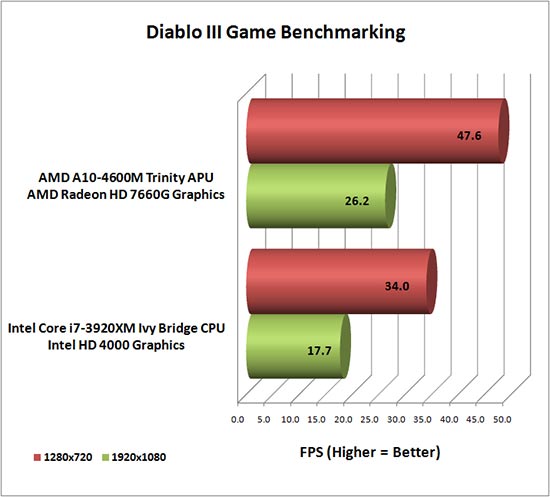Observation.
1. It is an interesting development.
2. Anandtech has the right idea. "There are no bad products; only bad prices"
3. It is important to separate facts from opinions.
4. AMD has the right idea to introduce this for laptop segment first.
4.1 Laptop has power consumption, performance, graphic, screen resolution, display quality, barebone/normal/entertainment/gaming/business/workstation segmentation. heat dissipation, add-on features, runtime, pricing (probably more)
4.2 Some will argue 4.1 applies for desktop as well. It is only partially true. read 4.3 below
4.3 Laptop ships in one piece and most of the time many parts of the unit are already fixed (factors in 4.1) the commons thing you can easily change are RAM/HD. The rest are not common per generic mass-market laptops. (I understand some will argue replaceable screen, gpu and perhaps doing cpu upgrade themselves, but we are talking "common mass-market size laptops in millions of units)
4.4 As a result of 4.1 and 4.3, you have a lot of variations. In desktop scenario, you can alter the balance easily by end users and some factors are of minimal concern to desktop users. In laptops, these are relevant. It is not easy to change the overall combination once delivered. Because of the variations and usually no single one can cover all practical combinations, there tends to be segments where you can find possibility. This explains point 4.
5. Combine everything in 4-to-4.4, this explains point 2.
6. Misc
6.1 Per single-thread, yes it is still less than SB/IB when you compare on same clock.
6.2 The point here is we are not talking about same clock. It is about within the laptop power consumption, run-time wrt performance and pricing.
6.3 Top SB/IB laptop models obviously have great performance, especially those with mid or high-end range of nVidia/AMD discreet GPU. But the pricing reflects that as well. Power consumption is also indirectly reflects that (indirect because most advance users know when they go for quad-core top-speed laptop processors with high end discreet gpu, power consumption will increase a bit and runtime will reduce a bit) (EDIT here to clarify the exact meaning)
6.4 Other than that, the remaining is wide open with choices, with features/pricing an important differentiation.
7. An interesting development, after introduction of Retina Display on iPad, some users are more interested in higher resolution LCD screen on PC laptops.
8. In the end refer to point 2 "There are no bad products; only bad prices"
Cheers.
1. It is an interesting development.
2. Anandtech has the right idea. "There are no bad products; only bad prices"
3. It is important to separate facts from opinions.
4. AMD has the right idea to introduce this for laptop segment first.
4.1 Laptop has power consumption, performance, graphic, screen resolution, display quality, barebone/normal/entertainment/gaming/business/workstation segmentation. heat dissipation, add-on features, runtime, pricing (probably more)
4.2 Some will argue 4.1 applies for desktop as well. It is only partially true. read 4.3 below
4.3 Laptop ships in one piece and most of the time many parts of the unit are already fixed (factors in 4.1) the commons thing you can easily change are RAM/HD. The rest are not common per generic mass-market laptops. (I understand some will argue replaceable screen, gpu and perhaps doing cpu upgrade themselves, but we are talking "common mass-market size laptops in millions of units)
4.4 As a result of 4.1 and 4.3, you have a lot of variations. In desktop scenario, you can alter the balance easily by end users and some factors are of minimal concern to desktop users. In laptops, these are relevant. It is not easy to change the overall combination once delivered. Because of the variations and usually no single one can cover all practical combinations, there tends to be segments where you can find possibility. This explains point 4.
5. Combine everything in 4-to-4.4, this explains point 2.
6. Misc
6.1 Per single-thread, yes it is still less than SB/IB when you compare on same clock.
6.2 The point here is we are not talking about same clock. It is about within the laptop power consumption, run-time wrt performance and pricing.
6.3 Top SB/IB laptop models obviously have great performance, especially those with mid or high-end range of nVidia/AMD discreet GPU. But the pricing reflects that as well. Power consumption is also indirectly reflects that (indirect because most advance users know when they go for quad-core top-speed laptop processors with high end discreet gpu, power consumption will increase a bit and runtime will reduce a bit) (EDIT here to clarify the exact meaning)
6.4 Other than that, the remaining is wide open with choices, with features/pricing an important differentiation.
7. An interesting development, after introduction of Retina Display on iPad, some users are more interested in higher resolution LCD screen on PC laptops.
8. In the end refer to point 2 "There are no bad products; only bad prices"
Cheers.
Last edited:
![[H]ard|Forum](/styles/hardforum/xenforo/logo_dark.png)
